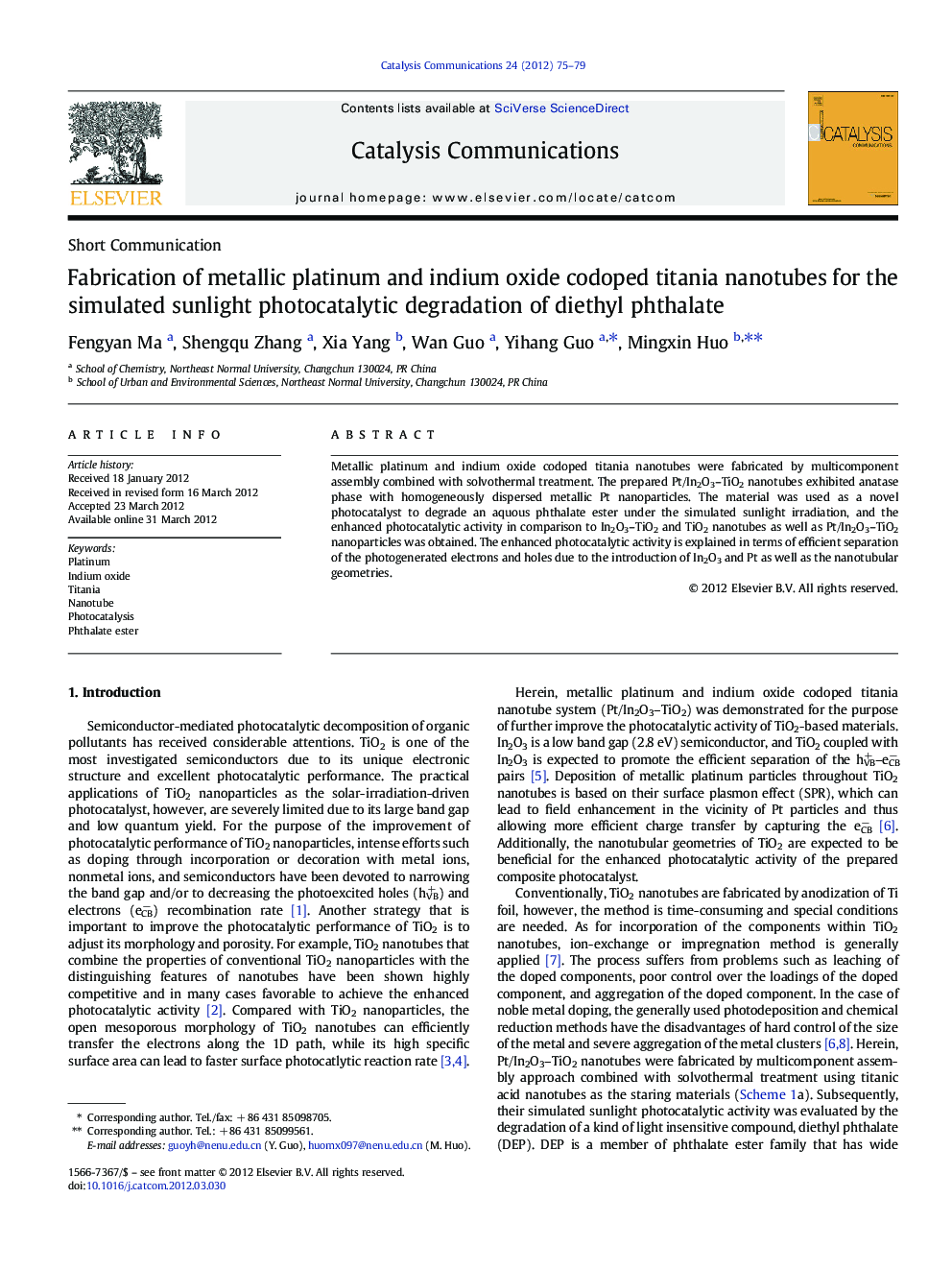| Article ID | Journal | Published Year | Pages | File Type |
|---|---|---|---|---|
| 50606 | Catalysis Communications | 2012 | 5 Pages |
Metallic platinum and indium oxide codoped titania nanotubes were fabricated by multicomponent assembly combined with solvothermal treatment. The prepared Pt/In2O3–TiO2 nanotubes exhibited anatase phase with homogeneously dispersed metallic Pt nanoparticles. The material was used as a novel photocatalyst to degrade an aquous phthalate ester under the simulated sunlight irradiation, and the enhanced photocatalytic activity in comparison to In2O3–TiO2 and TiO2 nanotubes as well as Pt/In2O3–TiO2 nanoparticles was obtained. The enhanced photocatalytic activity is explained in terms of efficient separation of the photogenerated electrons and holes due to the introduction of In2O3 and Pt as well as the nanotubular geometries.
Graphical abstractFigure optionsDownload full-size imageDownload as PowerPoint slideHighlights► Pt/In2O3–TiO2–NTs were prepared by multicomponent assembly-solvothermal treatment. ► Pt and In2O3 homogeneously dispersed through TiO2 nanotubes. ► Pt/In2O3–TiO2–NTs exhibited excellent photocatalytic activity towards DEP degradation. ► Excellent activity originated from improved quantum yield and nanotubular geometries.
